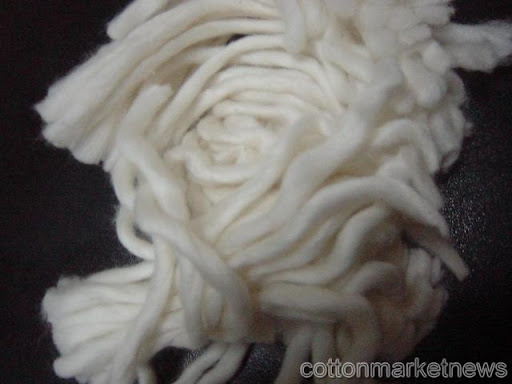Thursday, March 10, 2011
Costly cotton puts stitch in clothing industry
 HACKENSACK, N.J. – Price surges in cotton and other fabrics have retailers and manufacturers feeling stretched and facing a tough choice: Pass higher costs along to their customers or absorb them, cutting into profit.
HACKENSACK, N.J. – Price surges in cotton and other fabrics have retailers and manufacturers feeling stretched and facing a tough choice: Pass higher costs along to their customers or absorb them, cutting into profit.
So far, consumers haven't really felt the effect of cotton prices that have jumped more than 130 percent in a year to the highest prices per pound since the Civil War, but retailers and manufacturers say that probably will change when fall merchandise begins arriving in stores.
Several factors have combined to make cotton a hot commodity: a decrease in the supply because of poor crops and reduced planting in response to the recession; rising labor costs in China and India; and renewed demand for apparel as the economy recovers.
"I'm getting calls all the time: 'You got any cotton? You still have that cotton?'" said Danny Letzt, co-owner of Les Tout Petits, a children's-clothing maker in Ridgefield, N.J.
Letzt has a "long" position in cotton, with several dozen rolls of fabric he stocked up on and is selling to other manufacturers searching for the fabric. "It's like having cash," he said. "It used to be that you couldn't give it away."
Les Tout Petits has cotton to spare in part because it has shifted its fashion line a bit away from more casual, cotton T-shirts and toward dresses and party clothes that use polyester blends, sequins or other specialty fabrics.
But the cotton shortage has driven up demand for other fabrics as well, and Les Tout Petits recently learned it couldn't get a fabric it needed for one of its designs. It's also been hit with price increases for polyesters as well as for cotton.
Lois Letzt, Danny's wife and business partner, designs the Les Tout Petits fashions that are sold in boutiques in Manhattan and elsewhere in the country and have been worn by the Obama daughters. She said the company is trying to cut costs rather than charge more for retailers.
Consumers will pay extra for special-occasion outfits, such as party dresses, but not for staples, a retail fact of life pushing her to focus more on special-occasion clothes, she said.
This month and next are when retailers visit trade shows to view fashions and place orders for fall, and store owners say they're already seeing the impact of the cotton-price surge.
Joyce Hamrah, co-owner of Hamrah's, an upscale women's clothing store in Cresskill, N.J., toured designer showrooms last week and saw cotton shirts priced at $400 to $500 that would have been $300 a year ago. The manufacturers "tell you this is the price, and we have to decide what we want to do in the way of buying it or not," Hamrah said.
At central Ohio's retail giants, the price of cotton has been the topic of much discussion in recent quarterly reports.
Abercrombie & Fitch officials said a few weeks ago "that a portion of these cost increases have to be passed on because they are pretty steep."
"So, 'We will be increasing our prices' is the answer to the question," CEO Michael Jeffries said.
But he wouldn't say how much of the cost would be passed on, partly because the company is still working on cost projections for the year. However, Abercrombie does see cost pressures becoming more of an issue in the company's fall merchandise lines.
At Limited Brands, on the other hand, executives have long said that the price of cotton is almost beside the point.
"We create value for our customers through the emotional content of our brands and merchandise, which enables us to price independent of cost and to earn premium margins," said Chief Financial Officer Stuart Burgdoerfer. "We think this aspect of our business differentiates us from many others in the retail industry."
Limited Brands also notes that its chains make little use of cotton, even at Victoria's Secret, where bras and panties long ago were switched to other fabrics.
The issue of cotton prices was triggered by the financial crisis and recession, said Ram Sareen, CEO of Tukatech, a Los Angeles company that helps clothing manufacturers reduce fabric waste through computer software and other technologies.
"When farmers saw the demand for clothing going down, they did not plant the crops," he said. "The actual drop in sales was less than 14percent, but the brands and retailers started cutting the inventory and they reduced the buying by 40percent."
Analysts predict clothing prices will rise 10percent in the fall. Sareen, however, said increases could be even higher.
"The problem is really going to surface when they start finding out that the 10percent increase is not going to solve the pricing problem," he said.

This post was written by: HaMienHoang (admin)
Click on PayPal buttons below to donate money to HaMienHoang:
Follow HaMienHoang on Twitter












0 Responses to “Costly cotton puts stitch in clothing industry”
Post a Comment